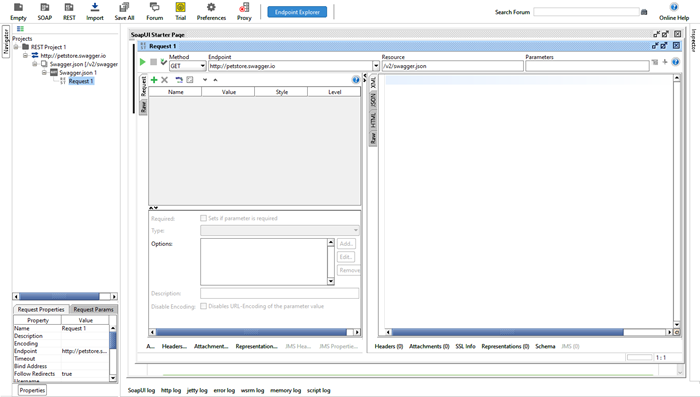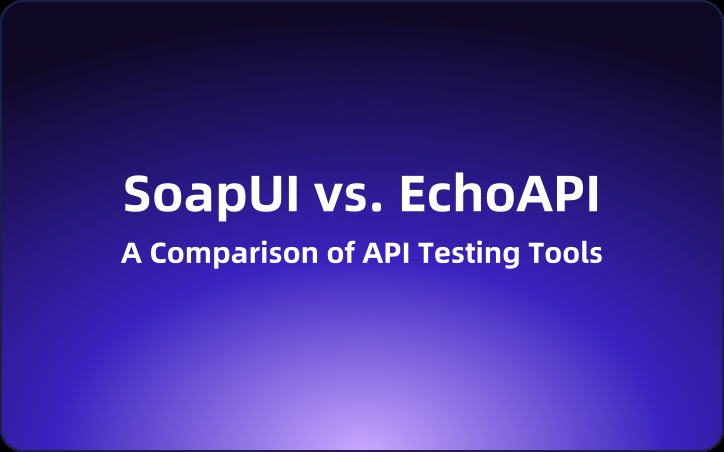SoapUI vs. EchoAPI: A Comparison of API Testing Tools
I'll compare two popular API testing tools, SoapUI and EchoAPI, detailing their strengths and weaknesses.
API testing plays a crucial role in modern software development, and selecting the right tools is essential to ensure the quality and efficiency of your APIs. Here, I'll compare two popular API testing tools, SoapUI and EchoAPI, detailing their strengths and weaknesses.

What is SoapUI?
SoapUI is a long-standing tool for functional and load testing of APIs. Originally designed for SOAP protocol support, it also offers capabilities for RESTful API testing. With rich interfaces and advanced scripting capabilities, SoapUI is a versatile choice for API testers.

Key Features of SoapUI
- Wide Protocol Support: While primarily supporting SOAP, it also handles REST, HTTP, JMS, AMF, JDBC, and various other protocols.
- Detailed Testing Capabilities: SoapUI allows for functional, load, security, and compliance testing.
- Customization and Scripting: Advanced test case customization through Groovy scripting.
- Open Source and Commercial Versions: Offers a free open-source version and a commercial version (ReadyAPI) with more advanced features.
Pros and Cons of SoapUI
- Pros
- Wide protocol support for diverse API testing needs.
- Flexible test design with scripting capabilities.
- Cons
- Complex interface with a steep learning curve for new users.
- Some advanced features require the commercial version.
What is EchoAPI?
EchoAPI is a modern, multifunctional tool that supports API development, debugging, testing, and documentation management. It focuses on the design and testing of RESTful APIs, with an intuitive and user-friendly interface.

Key Features of EchoAPI
- Interactive API Development: Centralizes the entire development process from coding to documentation generation.
- Seamless Testing Environment: Facilitates smooth execution of API functional and load tests.
- Automation and Simplification: Supports automated testing and detailed report generation, simplifying testing tasks.
- Modern Interface: Provides an intuitive design that is friendly to beginners, making API schema design and response viewing easy.
Pros and Cons of EchoAPI
- Pros
- User-friendly and intuitive interface for quick onboarding.
- An integrated solution for API development, debugging, testing, and documentation.
- Offers real-time testing and feedback.
- Cons
- Does not support as wide a range of protocols as SoapUI (mainly focuses on RESTful APIs).
Conclusion
SoapUI and EchoAPI are tools that offer distinct advantages based on their design purposes and features. SoapUI is well-suited for large-scale projects requiring diverse protocol and functionality testing, while EchoAPI excels in situations where simple and effective RESTful API management is needed.
- SoapUI is often ideal for complex, large-scale API testing.
- EchoAPI is advantageous for intuitive and rapid API development and debugging.
Choosing the right tool should depend on your project requirements and team’s skill set. Both tools, when used appropriately, greatly contribute to enhancing API quality.




 EchoAPI for VS Code
EchoAPI for VS Code

 EchoAPI for IntelliJ IDEA
EchoAPI for IntelliJ IDEA

 EchoAPl-Interceptor
EchoAPl-Interceptor

 EchoAPl CLI
EchoAPl CLI
 EchoAPI Client
EchoAPI Client API Design
API Design
 API Debug
API Debug
 API Documentation
API Documentation
 Mock Server
Mock Server








